Paris Photo, Day 5: Faces
Staring at the end of the photo fair
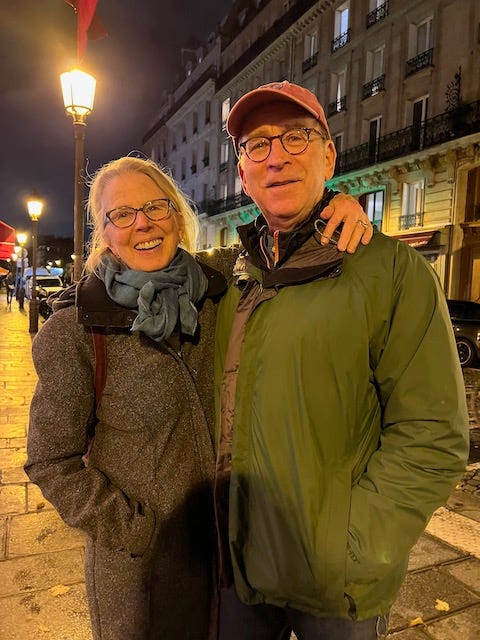
Isn’t this how most of us got into photography in the first place? We take pictures of lovers, of family, of friends, of events with human actors, and of course of ourselves.
Sometimes our interest in portraits is prurient, or voyeuristic. Diane Arbus’s photographs — to name perhaps the most notorious practitioner — grab many of us that way.
Paris Photo this week has been full of portraits — of ‘faces’ — of all kinds, all colors, all styles, including faces that are implicit rather than explicitly present in the image.
I keep coming back to this startling photo of an English beach crowd waiting for the ketchup pot. It is a large print and one of Martin Parr’s series of British people having a holiday at the beach. Nobody is ‘made’ to look good in this photo. It is both documentary and ironic. And most of us have seen and participated in creating messes like the one on this condiment table.
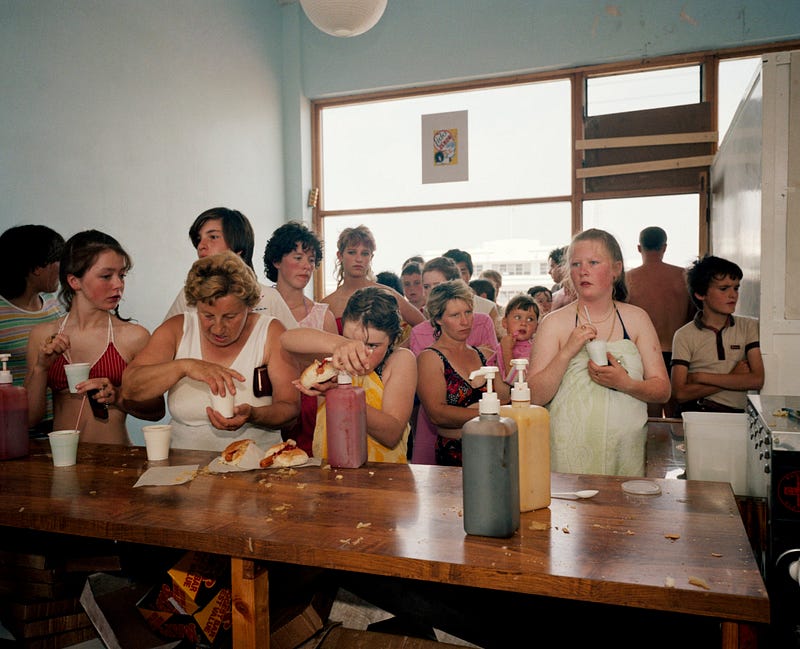
There are ironic photographs that make us laugh and ironic photographs that sing with sorrow and empathy. Joseph Rodriguez’s photograph of Monique, below, is not comic, though it contains a visual joke or pun. It is gorgeous largely because of the light in the subject’s eyes, and her patience mingled with impatient apprehension.

More irony! Here is a beautiful, ironic parody of Manet’s “Le déjeuner sur l’herbe.”
For reference, here is that painting:
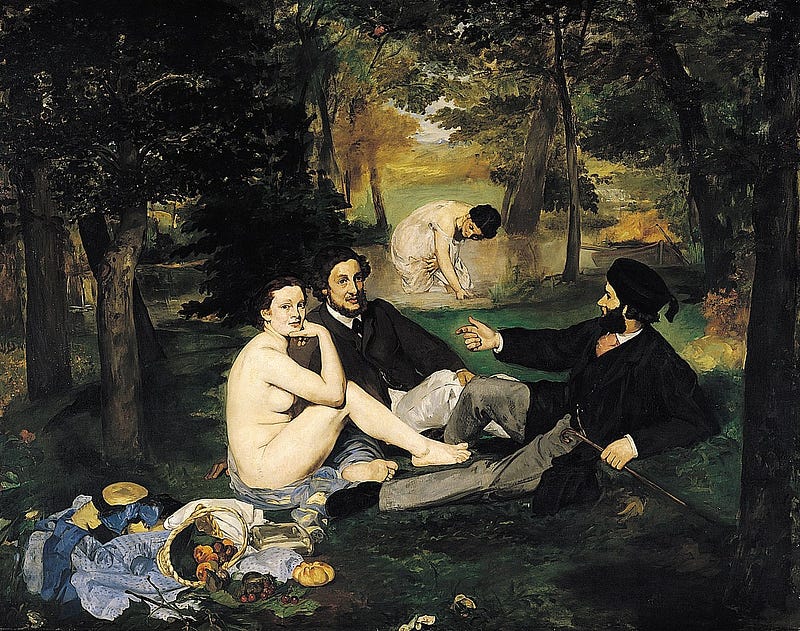
Here is Renée Cox’s take on the painting. Much of her career post-fashion has been to challenge and provoke responses to the unbearable whiteness of American culture, shall we say. And fascinatingly, she decided to go into fashion journalism after a conversation with Deborah Turbeville, whose work I discussed in my previous post. Like Turbeville, Cox moved away from fashion, at least as it was conventionally delivered.

This is a wonderful, searing commentary on whiteness versus the white gaze on Blackness, and on the history of the artistic and social use of women’s bodies. The colonialist, pseudo-ethnographic costuming and props are both funny and distressing. As in Manet’s painting, the woman subject is the only one gazing straight at the artist /photographer/camera — though Manet’s model seems amused or bemused, while Cox’s is less tolerant, shall we say. And I do believe that the model is Cox herself.
Then there are the faces that we look for, or that speak to us because they are part of our lives, though we are not part of theirs. Good photographers can capture those faces with some regularity. Lucky photographers can take once-in-a-lifetime defining captures of their subjects.
James Baldwin is one of my icons. There are many good photos of Baldwin because he did not hide his piercing, angry intelligence.
This one is not my favorite. There were at least three images of Baldwin scattered throughout Paris Photo this year, but the others were unreproducible. I couldn’t find versions of them online to show here. Still, I do like Fred McDarrah, so….

Baldwin was both radical and gay. That’s not an unusual combination. His writings and comments on Black lives in the United States are rage-filled and eloquent. He spent much of his adult life in France, though he did not stop commenting on American politics and race issues.
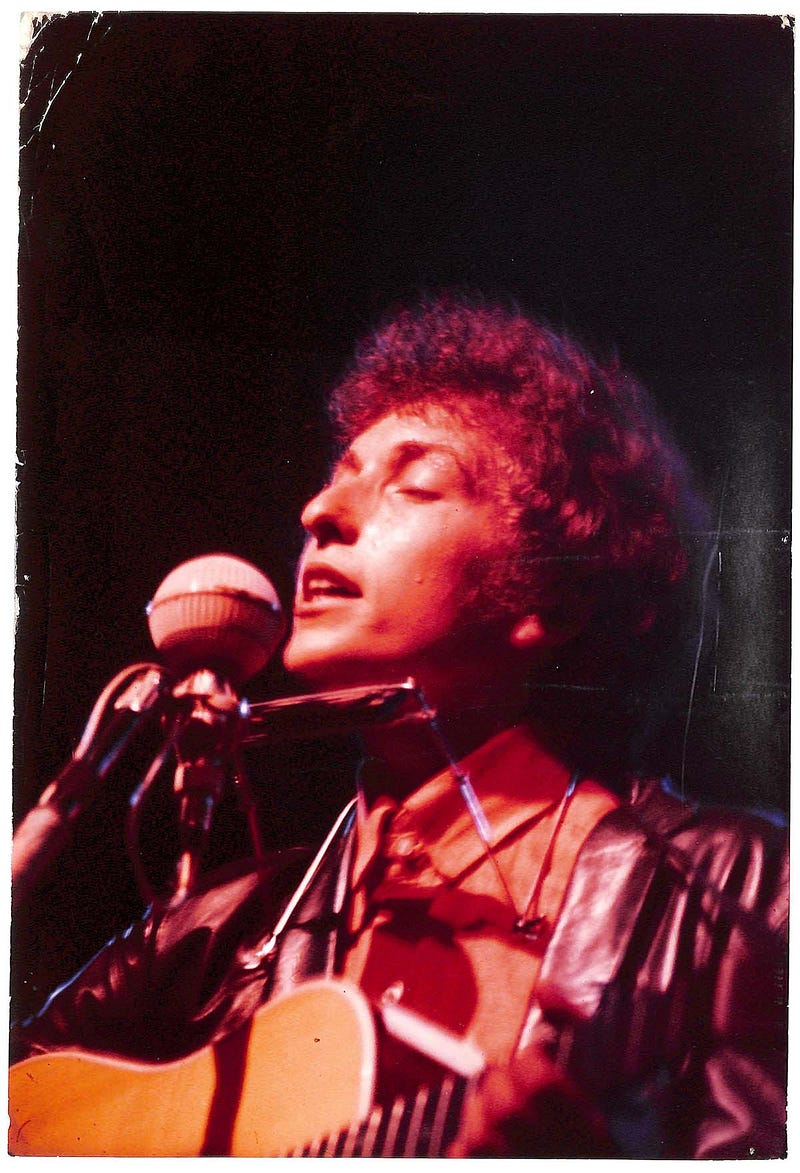
Then there is the inescapable Bob Dylan. The print I’ve inserted above is more red and its surface more damaged than the print displayed at the Paris Photo booth. Same photo, different print. The way that Paris Photo manages its galleries’ assets is to make it pretty much impossible to copy and paste reproductions directly from its catalogue, so one must find the images elsewhere online.
This Dylan photo was taken during Dylan’s acoustic set at Newport before he plugged in. Thus it is a mega-famous moment in rock history. Bob Gruen, it should be added, is a major figure in popular music photography, following headlining artists like Dylan, Elton John, and the Stones for years.
Here is Fred McDarrah’s version of Dylan captured the same year, during a “Save the Village” action in Sheridan Square. I say “captured,” but Dylan has always been and remains un-capturable.

Then there are non-human faces, vitally important — with “vitally” taken to its root in life-giving or -preserving — to many of us. Leila Jeffreys contributed several bird photos to Paris Photo this year. She specializes in bird portraits and videography, and they are mighty lovely.
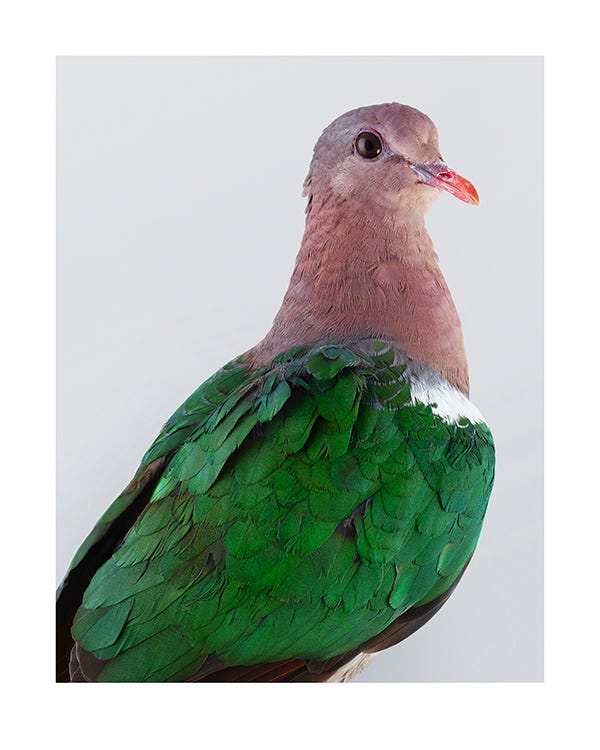
Then there are the portraits of animals with the humans they are close to. Here is a beautiful, simple photograph by Alessandra Sanguinetti:
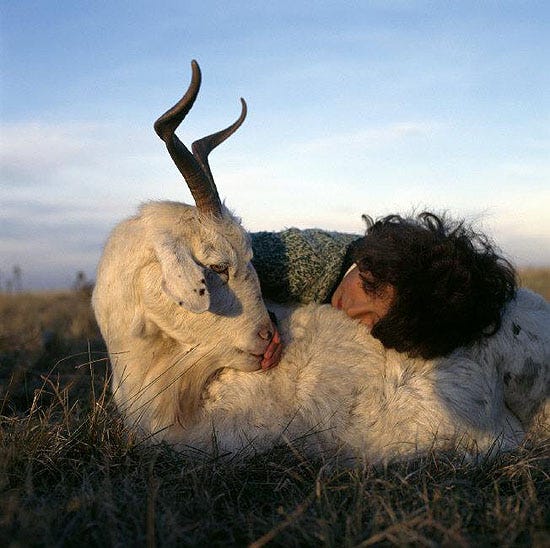
There are faces that compel us with their utter absorption in an activity. This girl is making a good time in a rough countryside at a time of severe economic hardship with the fading of the coal mines. Chris Killip spent significant time documenting the lives of these largely transient families who had been trying to make a living off the detritus of the nearby mines, by picking coal out of the sea.
The photograph is a stunning composition, with the horizon off-kilter and the utility pole in the background echoing the young girl leaning into her earnest play. Also, the portrait tells the story of a whole community.
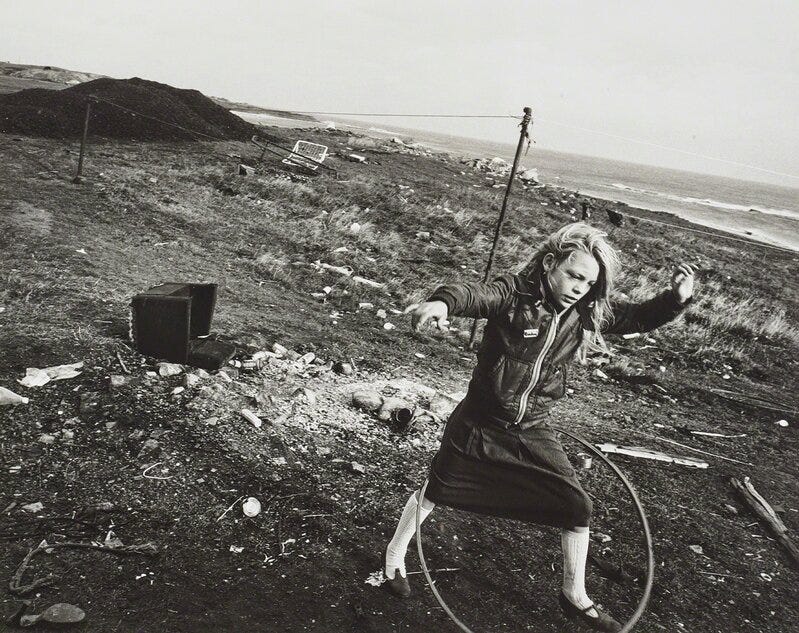
Here is a gorgeous portrait of a youngster smoking. It is early and so, frankly, reflects additional talent on the photographer’s part to see, frame, shoot, and then print this beautiful photograph.

Minna Keene migrated from Germany (her birthplace) to England to South Africa and finally to Canada, following her husband. Interestingly, during the years in which she shot the portrait above, she also engaged in the kind of typological portraiture that white people enjoyed: creating images of people of color that purported to display the characteristics of their groups, tribes, or nations.
The portrait above hardly smacks — to this viewer’s eyes — of the kind of imperialistic, ethnographic art that she practiced extensively during her South African and Canadian years.
Finally, here is a “snapshot” I took of visitors studying a series by the Taiwan-born photographer Annie Hsiao-Ching Wang, called “The Mother as Creator,” which recorded an annual scene with her son, from her pregnancy to his young adulthood, each photograph featuring a large print of the previous year’s photo in the background. And each year’s photo captures the life of the boy at that time, and presumably the mother’s relationship with that life. Pretty cool.
I suppose one could cast the project’s dynamics in the opposite direction, and many of us have kids who might somewhat resentfully do just that. (Oh, yeah, that was the year you were going up for tenure. You never had time to take us to the movies. Et cetera.)
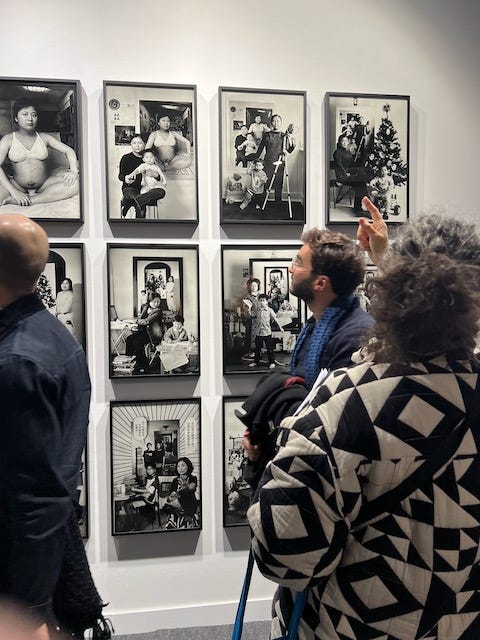
I hope some of you will contemplate visiting Paris during a future Paris Photo Week — generally in early November, which is NOT a bad time to visit.
Oh, come on, there’s no bad time to visit Paris.
If so, let me know. We could get a café or a verre de vin — or, you know, a beer.
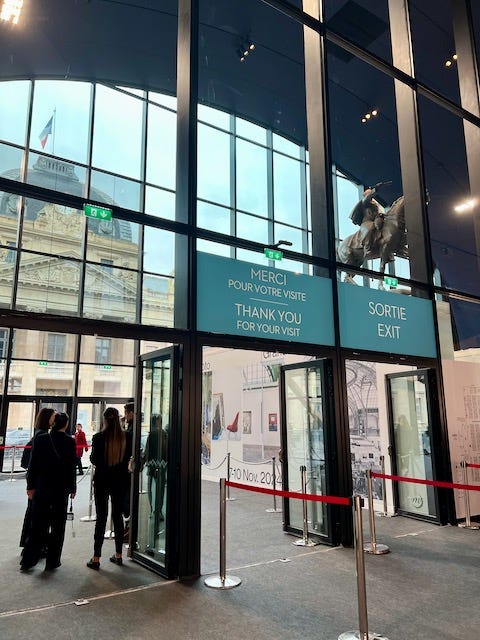
PS — I think you may still be able to see the online catalogue, which has lots of images and information.
Besides the previous Paris Photo stories, here are a few of my Paris entries.
Thanks for looking!





